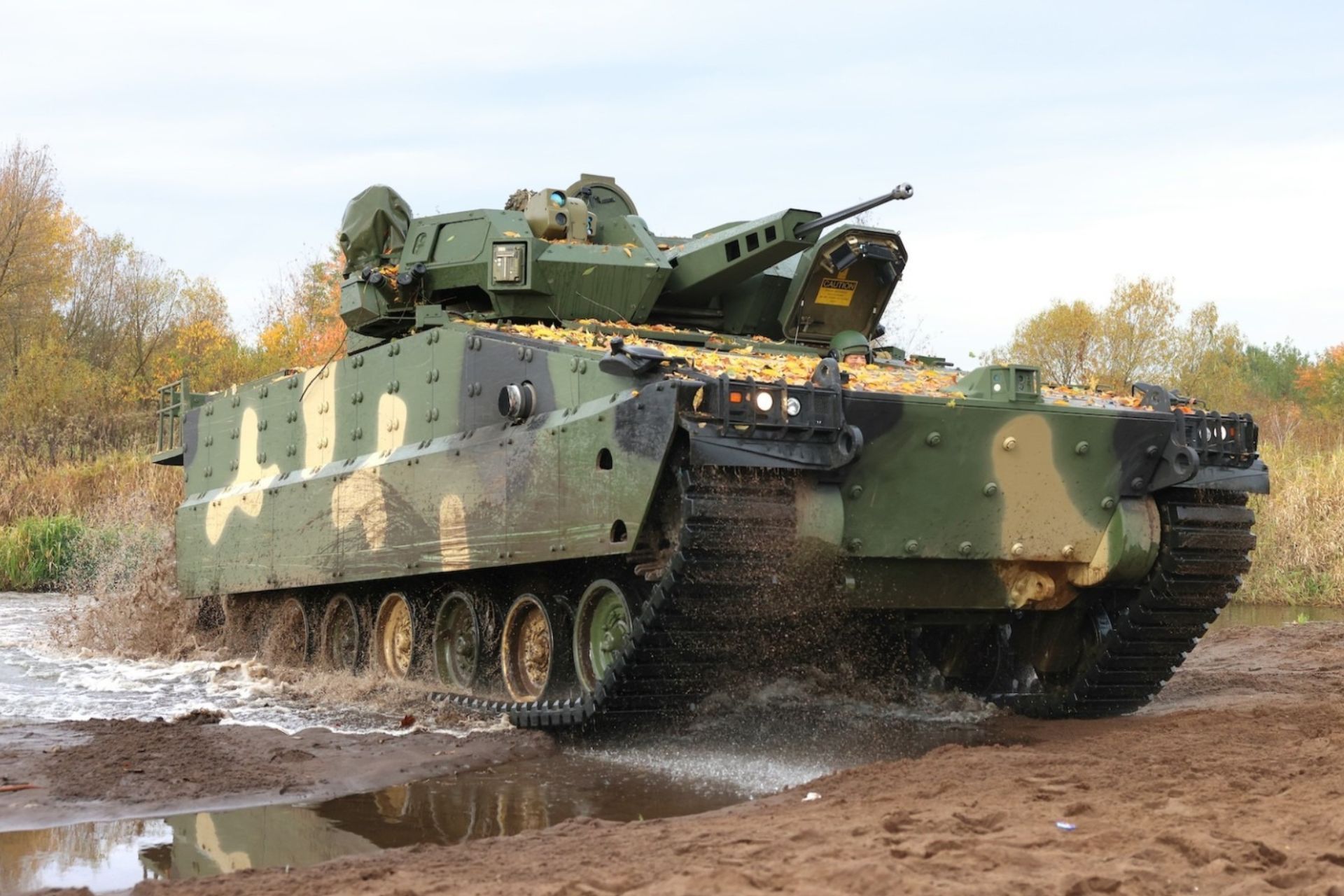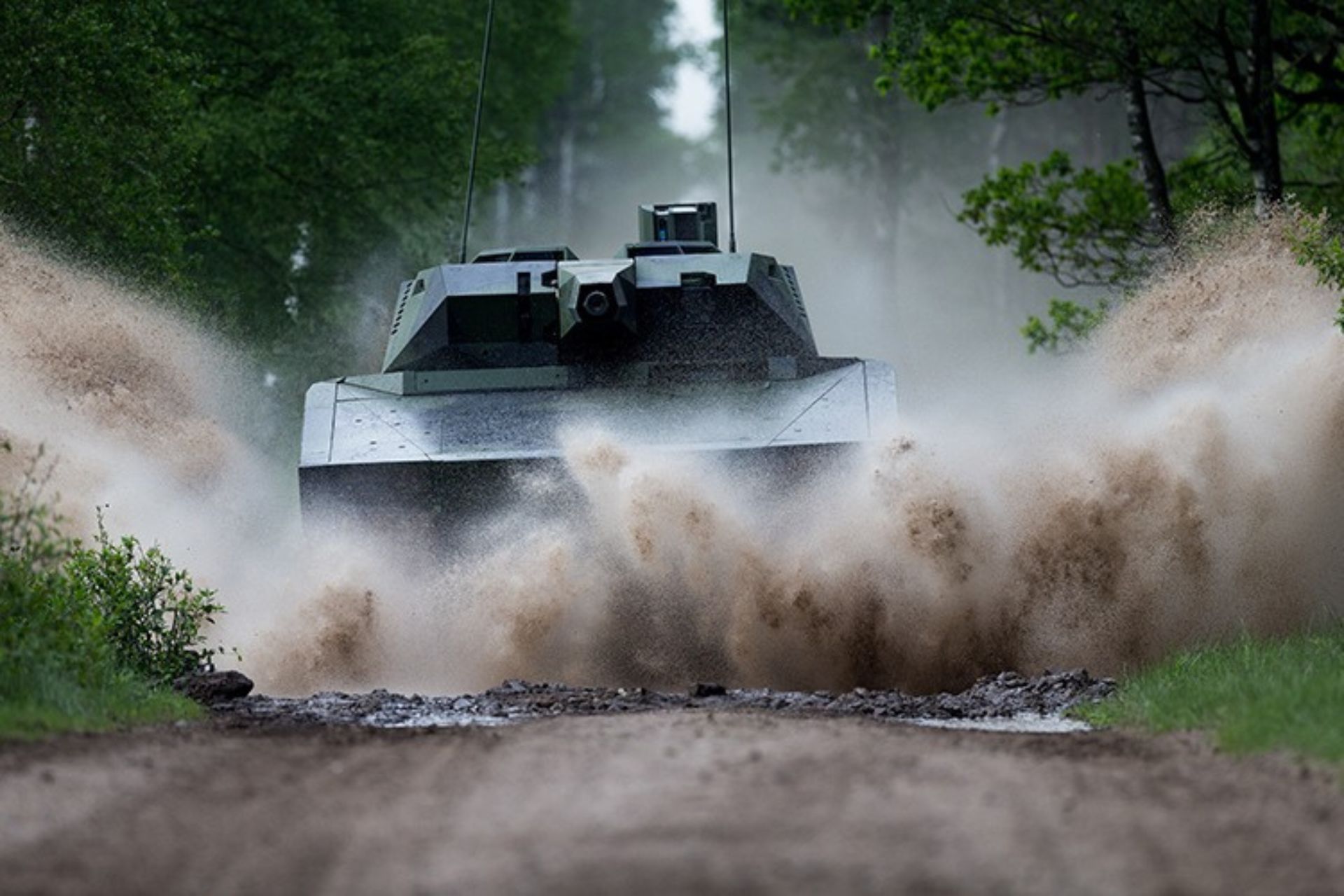Breaking News
Acceleration of Polish Defense Program: Foreign Chassis Equipped with ZSSW-30 Turret?.
According to information from Defence24, the Polish Armament Group is considering accelerating the development of its heavy infantry fighting vehicles, a decision that could mark a significant step in improving the country's defense capabilities. This program, launched in 2023, aims to meet the Polish Army's needs for armored vehicles capable of supporting the Abrams tanks recently integrated into the 18th Mechanized Division. The experience of the conflict in Ukraine has highlighted the importance of a heavier and better-armored vehicle than the floating Borsuk Infantry Fighting Vehicle (IFV) already in service.
Follow Army Recognition on Google News at this link

For many, the best option seems to be the Redback with the ZSSW-30 turret, forming the PL21(Picture source: Hanwha)
The ZSSW-30 is a Polish remotely controlled turret developed by Huta Stalowa Wola (HSW) in partnership with WB Electronics, designed to replace the Hitfist-30P turret on Rosomak APCs and to be mounted on the Borsuk IFV. Development began in response to maintenance and modernization issues with existing turrets, leading to the creation of the ZSSW-30, which offers better integration with domestic components. The turret is equipped with a 30mm Mk44S Bushmaster II automatic cannon, a coaxial UKM-2000C machine gun, and two Spike-LR anti-tank missiles. It also features eight 81mm smoke grenade launchers and a sophisticated fire control system with "hunter-killer" capabilities. The system includes advanced optics, laser rangefinders, and night vision, improving target acquisition and engagement capabilities.
Production of the ZSSW-30 began in 2022, with its official entry into service in December 2023, when it was first deployed on Rosomak IFVs within the 21st Podhale Rifle Brigade. Initial orders included 70 units, with a total of 341 turrets planned for production. The turret has undergone significant development, including the integration of artificial intelligence to improve targeting and coordination with drones. Its design offers enhanced modular protection and capabilities for engaging both ground and air targets, making it a crucial element in modernizing Poland's armored combat vehicles.
The current concept for these new vehicles is inspired by the model used for the Krab howitzer, which combines a Polish turret with a foreign-licensed chassis. Instead of developing an entirely new chassis, a solution that would take too much time, the Polish Armament Group plans to use an existing chassis provided by a foreign partner, on which the Polish ZSSW-30 turret would be mounted. This accelerated development model has already proven effective with the Krab howitzer and could be a viable solution to quickly meet the army's needs.
Three main bidders are competing for this lucrative contract: Rheinmetall Lynx, Otokar Tulpar, and Hanwha Redback. Each of these vehicles offers a chassis that could accommodate the ZSSW-30 turret.
- Rheinmetall Lynx: The Lynx is a next-generation infantry fighting vehicle designed to offer great modularity and maximum protection. It can carry up to 9 soldiers in addition to its crew of 3. Its standard armament includes a 30mm or 35mm automatic cannon with options for anti-tank missiles. The Lynx is powered by a Liebherr engine, which is unfamiliar to the Polish army and could be a disadvantage. While it offers excellent protection against mines and improvised explosive devices (IEDs), recent reports of ammunition delivery failures could play against it.
- Otokar Tulpar: The Tulpar is a Turkish vehicle designed to be highly mobile and versatile. It is equipped with a 30mm automatic cannon and can be fitted with missile systems. The Tulpar stands out for its excellent power-to-weight ratio, offering exceptional mobility across various terrains. However, while its defense capabilities are solid, its armor may be inferior to that of its competitors, especially against heavier threats.
- Hanwha Redback: The Redback is a South Korean infantry fighting vehicle known for its robustness and advanced technology. It is equipped with a 30mm cannon, and its protection includes active defense systems, modular armor, and strong resistance to IEDs. The Redback is powered by a proven engine and is already well-integrated into the South Korean defense industry. It is widely regarded as the favorite for this contract, especially with the ZSSW-30 turret, forming the PL21 model. Its excellent protection, ability to engage multiple targets simultaneously, and technological integration make it a strong choice for the Polish army.
However, Polish PGZ will not develop a new heavy infantry fighting vehicle on its own, as it would take too long. The plan is to mount the Polish ZSSW-30 turret on the chassis of a ready-made infantry fighting vehicle from a foreign manufacturer. And for many, the best option seems to be the Redback with the ZSSW-30 turret, forming the PL21. On the other hand, the Rheinmetall Lynx, with its Liebherr engine unfamiliar to the Polish army and recent difficulties in ammunition delivery, may face obstacles in winning this competition.




























